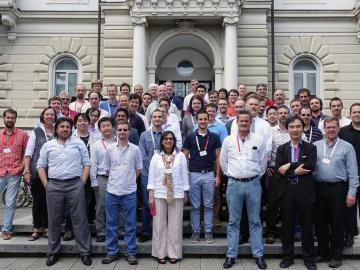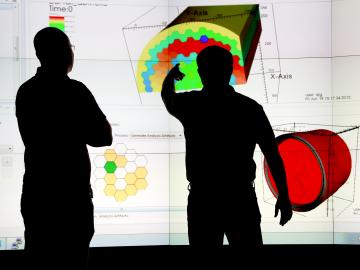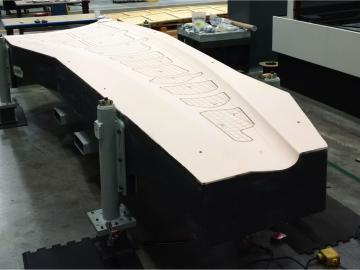Filter News
Area of Research
- (-) Advanced Manufacturing (2)
- (-) Supercomputing (20)
- Biological Systems (1)
- Biology and Environment (12)
- Clean Energy (44)
- Computer Science (1)
- Electricity and Smart Grid (1)
- Fossil Energy (1)
- Functional Materials for Energy (2)
- Fusion and Fission (8)
- Isotopes (1)
- Materials (45)
- Materials for Computing (3)
- National Security (8)
- Neutron Science (14)
- Nuclear Science and Technology (3)
- Transportation Systems (1)
News Type
News Topics
- Artificial Intelligence (4)
- Big Data (2)
- Biology (1)
- Biomedical (1)
- Buildings (2)
- Chemical Sciences (2)
- Climate Change (1)
- Computer Science (5)
- Coronavirus (1)
- Cybersecurity (1)
- Decarbonization (1)
- Energy Storage (3)
- Environment (1)
- Exascale Computing (4)
- Frontier (4)
- Grid (2)
- High-Performance Computing (3)
- Machine Learning (3)
- Materials (4)
- Materials Science (2)
- Microscopy (1)
- Nanotechnology (1)
- National Security (2)
- Partnerships (1)
- Physics (1)
- Quantum Computing (2)
- Quantum Science (1)
- Security (2)
- Simulation (1)
- Space Exploration (1)
- Summit (2)
- Sustainable Energy (2)
Media Contacts

The Frontier supercomputer at the Department of Energy’s Oak Ridge National Laboratory earned the top ranking today as the world’s fastest on the 59th TOP500 list, with 1.1 exaflops of performance. The system is the first to achieve an unprecedented level of computing performance known as exascale, a threshold of a quintillion calculations per second.

ORNL scientists will present new technologies available for licensing during the annual Technology Innovation Showcase. The event is 9 a.m. to 3 p.m. Thursday, June 16, at the Manufacturing Demonstration Facility at ORNL’s Hardin Valley campus.

Researchers at ORNL are teaching microscopes to drive discoveries with an intuitive algorithm, developed at the lab’s Center for Nanophase Materials Sciences, that could guide breakthroughs in new materials for energy technologies, sensing and computing.

A force within the supercomputing community, Jack Dongarra developed software packages that became standard in the industry, allowing high-performance computers to become increasingly more powerful in recent decades.

Scientists’ increasing mastery of quantum mechanics is heralding a new age of innovation. Technologies that harness the power of nature’s most minute scale show enormous potential across the scientific spectrum

A study led by researchers at ORNL used the nation’s fastest supercomputer to close in on the answer to a central question of modern physics that could help conduct development of the next generation of energy technologies.

More than 50 current employees and recent retirees from ORNL received Department of Energy Secretary’s Honor Awards from Secretary Jennifer Granholm in January as part of project teams spanning the national laboratory system. The annual awards recognized 21 teams and three individuals for service and contributions to DOE’s mission and to the benefit of the nation.

Leaders in hybrid accelerated high-performance computing (HPC) in the United States (U.S.), Japan, and Switzerland have signed a memorandum of understanding (MOU) establishing an international institute dedicated to common goals


A 3D printed trim-and-drill tool, developed by researchers at the Department of Energy’s Oak Ridge National Laboratory to be evaluated at The Boeing Company, has received the title of largest solid 3D printed item by Guinness World Records. ORNL printed the...




